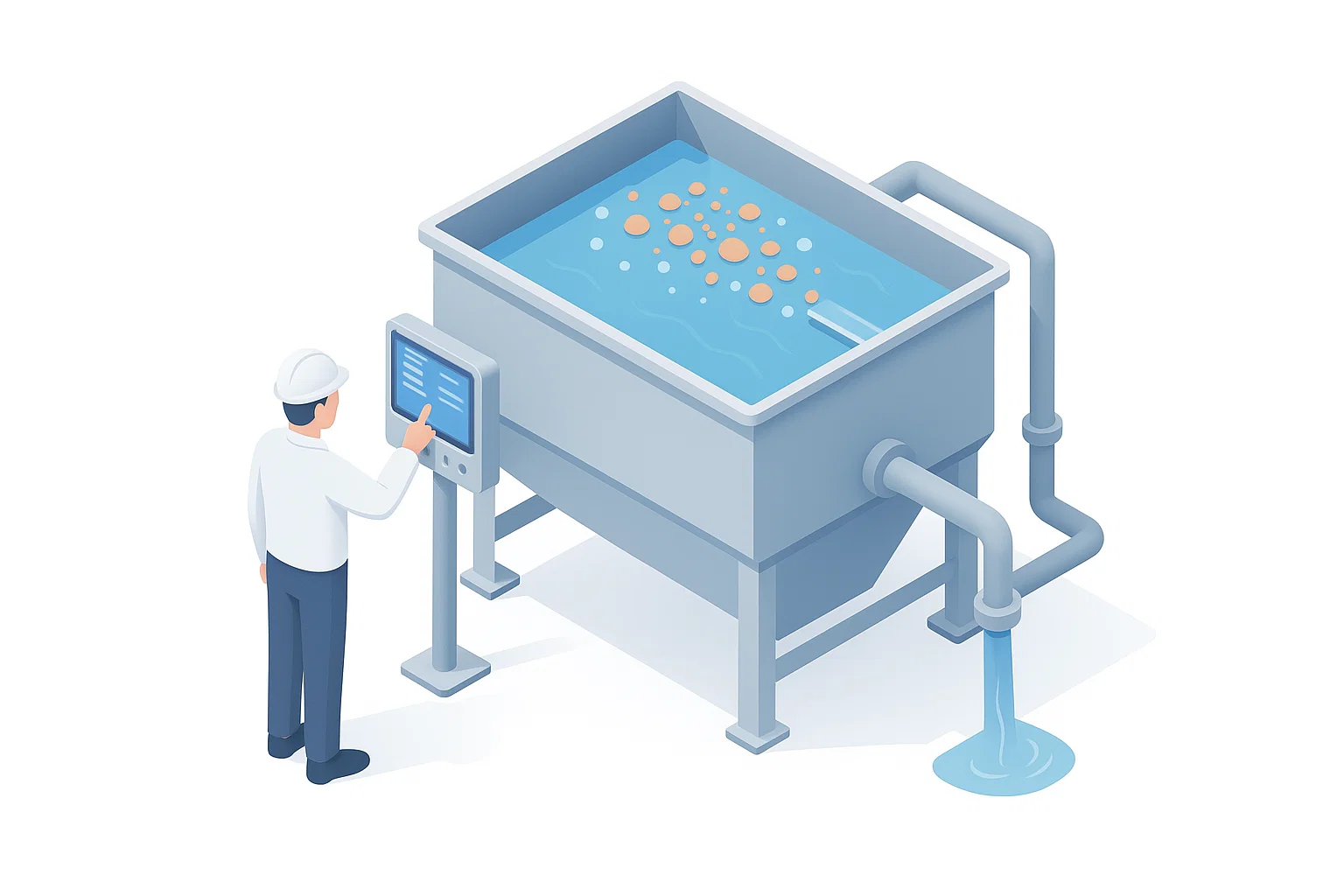용존 공기 부상(DAF) is a cornerstone technology in modern water treatment, especially for industrial and manufacturing plants facing complex wastewater challenges. Selecting the right DAF unit can significantly improve contaminant removal efficiency, reduce operational costs, and ensure compliance with stringent environmental regulations. This engineer’s guide, brought to you by Rumtoo, a trusted name in industrial solutions, will walk you through the critical factors to consider when choosing a DAF system tailored to your plant’s unique needs.
What is Dissolved Air Flotation (DAF) in Water Treatment?
Dissolved Air Flotation is a water treatment process that removes suspended solids, oils, greases (FOG), and other contaminants by introducing fine air bubbles into wastewater. These bubbles attach to impurities, causing them to float to the surface for easy removal via skimming. This process results in clarified water suitable for discharge or reuse, making DAF an essential technology in industrial wastewater management.
Why Choosing the Right DAF Unit Matters
Not all DAF units are created equal. The effectiveness of your water treatment plant hinges on selecting a system that matches your wastewater profile, flow rates, and operational goals. A poorly chosen DAF unit can lead to:
- Inefficient contaminant removal
- Increased chemical consumption
- Higher maintenance costs
- Regulatory non-compliance
- Reduced return on investment (ROI)
Rumtoo emphasizes that understanding your plant’s specific wastewater characteristics is the first step toward a successful DAF installation.
Key Considerations When Selecting a DAF Unit
1. Understand Your Wastewater Characteristics
Before evaluating DAF units, conduct a thorough analysis of your wastewater. Key parameters include:
- Flow rates: Average and peak volumes (e.g., m³/h or GPM) to size the unit correctly
- Contaminant profile: Concentrations of Total Suspended Solids (TSS), Fats, Oils, and Greases (FOG), biochemical oxygen demand (BOD), and chemical oxygen demand (COD)
- pH and temperature: These affect chemical coagulation and flotation efficiency
- Specific pollutants: Heavy metals, surfactants, or emulsified oils may require specialized treatment or pre-conditioning
Rumtoo recommends treatability studies to simulate DAF performance with your actual wastewater, ensuring precise system sizing and chemical dosing optimization.
2. Choose the Right DAF System Design
DAF units come in various configurations, each suited to different plant requirements:
- Rectangular vs. Circular Units: Rectangular DAFs are often preferred for larger flows and easier scalability, while circular designs can save space and offer efficient flow dynamics
- High-Rate DAFs: Ideal for plants with limited space, these units deliver increased capacity without compromising effluent quality
- Integrated Systems: Some suppliers, including Rumtoo, offer turnkey solutions that combine chemical dosing, controls, and automation for streamlined operation
3. Air Dissolving Technology
The heart of a DAF system is its air saturation and bubble generation technology. Efficient creation of microbubbles ensures better contaminant adhesion and flotation. Ask suppliers about:
- Air saturation methods and pressure levels
- Bubble size consistency
- Prevention of undissolved air entering the flotation chamber
Rumtoo’s advanced air dissolving systems optimize bubble generation for maximum contaminant removal.
4. Sludge Removal and Handling
Effective sludge removal is critical to maintain system performance and reduce downtime. Consider:
- Skimmer types: Flight, screw, or vacuum skimmers affect sludge dryness and ease of handling
- Sludge consistency: Important if further dewatering or disposal is planned
- Automation: Automated sludge removal reduces labor and improves operational efficiency
5. Construction Materials and Durability
Wastewater corrosivity dictates the materials used in DAF construction:
- Stainless steel (304 or 316): Offers superior corrosion resistance, ideal for aggressive wastewater
- Carbon steel with coatings: Cost-effective for less corrosive environments
Rumtoo customizes material selection to ensure longevity and minimal maintenance costs.
6. Integration with Existing Systems
A DAF unit should seamlessly integrate with upstream and downstream processes such as:
- Screens and equalization tanks
- Chemical dosing systems for coagulation/flocculation
- Biological treatment and sludge dewatering units
Rumtoo provides comprehensive solutions designed for smooth integration and enhanced overall plant performance.
Benefits of Using a High-Quality DAF Unit from Rumtoo
- Enhanced contaminant removal: Efficiently removes suspended solids, oils, and greases, ensuring regulatory compliance
- Compact footprint: Ideal for plants with space constraints without sacrificing capacity
- Operational flexibility: Handles fluctuating wastewater loads and contaminant concentrations effectively
- Reduced chemical usage: Optimized flotation reduces the need for excessive coagulants and flocculants, lowering costs and environmental impact
- Lower maintenance: Durable design and automated features minimize downtime and labor
How Rumtoo Supports Your Water Treatment Goals
With extensive experience in manufacturing and engineering, Rumtoo delivers tailored DAF units that meet the highest standards of performance and reliability. Their expert team guides you through:
- Wastewater characterization and treatability studies
- Custom DAF system design and engineering
- Installation, commissioning, and ongoing support
- Integration with your existing plant infrastructure
Rumtoo’s commitment to quality and innovation ensures your plant achieves optimal water treatment outcomes with maximum ROI.
FAQ: Choosing the Right DAF Unit
Q1: What industries benefit most from DAF technology?
DAF is widely used in food processing, chemical manufacturing, oil and gas, pulp and paper, and municipal wastewater treatment, among others.
Q2: How do I know if a DAF system will handle my wastewater?
A detailed wastewater analysis and treatability study are essential to confirm DAF suitability and optimize system design.
Q3: What maintenance is required for a DAF unit?
Regular inspection of air saturation systems, skimmers, and sludge removal components is needed. Automated features can reduce manual maintenance.
Q4: Can DAF units be scaled for future plant expansions?
Yes, modular and rectangular designs allow for easy capacity increases as your plant grows.
Conclusion and Call to Action
Choosing the right Dissolved Air Flotation unit is a critical decision that impacts your plant’s water treatment efficiency, compliance, and operational costs. By partnering with Rumtoo, you gain access to expert engineering, customized solutions, and reliable support tailored to your industrial needs in the USA and Europe.
Ready to optimize your water treatment process? Contact Rumtoo today or request a quote to find the perfect DAF unit for your plant.



